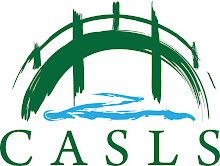From http://www.edweek.org/ew/articles/2012/03/23/26duallanguage_ep.h31.html
Momentum Builds for Dual-Language Learning
By Lesli A. Maxwell
March 23, 2012
In a preschool class at Gardner Academy, a public elementary school near downtown San Jose, teacher Rosemary Zavala sketched a tree as she fired off questions about what plants need to grow. "¿Qué necesitan las plantas?" she asked her 4-year-old charges in Spanish.
"Las flores toman agua" was the exuberant answer from one girl, who said that flowers drink water. A boy answered in English: "I saw a tree in my yard."
The next day, Ms. Zavala's questions about plants would continue—but in English.
This classroom, with its steady stream of lively, vocabulary-laden conversations in Spanish and in English, is what many educators and advocates hope represents the future of language instruction in the United States for both English-language learners and native English-speakers.
The numbers of dual-language-immersion programs like this one have been steadily growing in public schools over the past decade or so, rising to more than 2,000 in 2011-12, according to estimates from national experts.
That growth has come even as the numbers of transitional-bilingual-education programs shrank in the aftermath of heated, politically charged ballot initiatives pushing English immersion in states like Arizona, Massachusetts, and here in California.
Experts say the interest in dual-language programs now is driven by an increased demand for bilingual and biliterate workers and by educators who see positive impacts on academic achievement for both English-learners and students already fluent in English.
Read this extensive article at http://www.edweek.org/ew/articles/2012/03/23/26duallanguage_ep.h31.html?tkn=UOYFwCZn88e1rEM0d6te+OfLl3FuSrmoWNqO&cmp=clp-actfl
April 1, 2012
Subscribe to:
Post Comments (Atom)





No comments:
Post a Comment
Note: Only a member of this blog may post a comment.